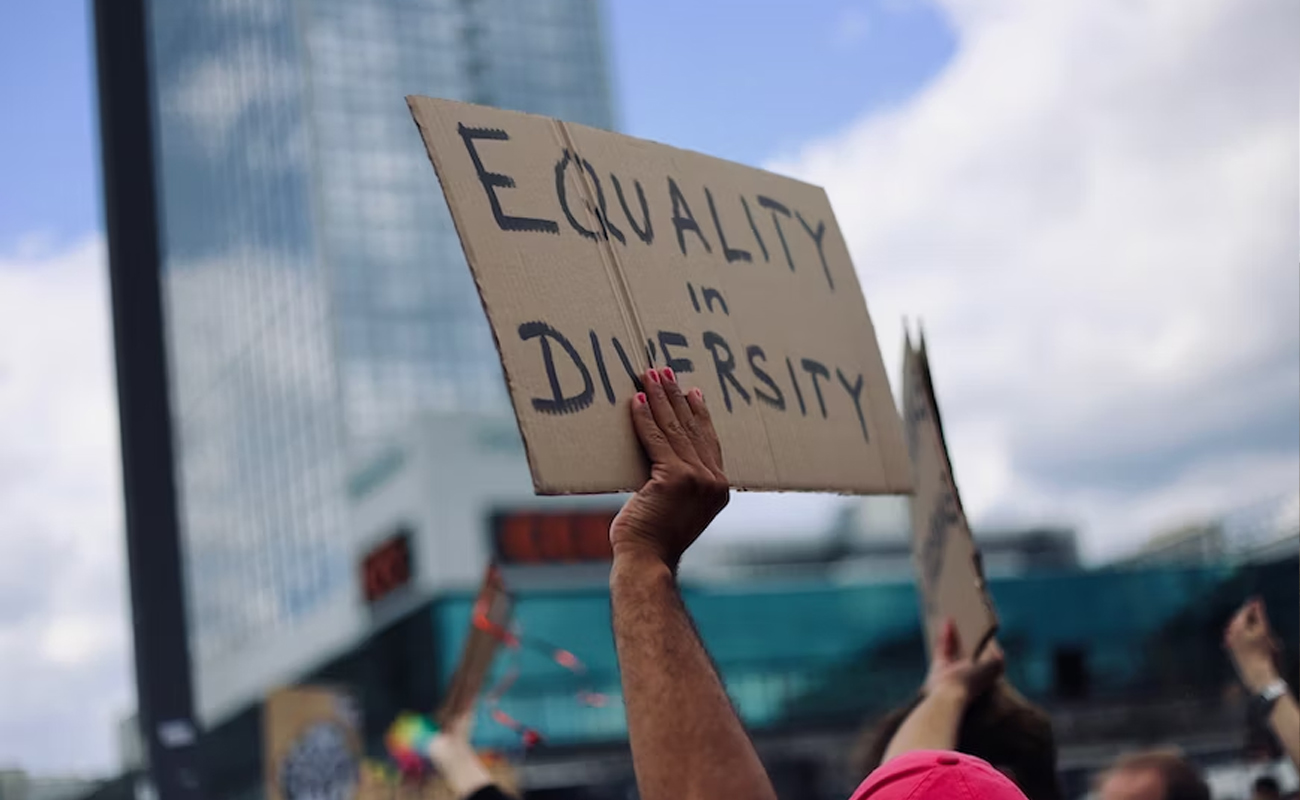Defending Diversity: Minorities under Taliban Rule
By Sediqa Bakhtiari
One of the most important departments in the Taliban’s regime is the Ministry of Promotion of Virtue and Prevention of Vice which works as a moral police. In the pictures and videos on available on social media, the moral police can be seen patrolling the streets, ensuring that citizens conform to the Taliban’s strict dress code and behave according to their interpretation of Sharia.
The Taliban’s policy of conformity goes beyond the enforcement of dress codes though. They have a strict definition for every individual’s social position, conduct and lifestyle. The regime promotes a single narrative that gives agency and authority only to one ethnic, religious and gender group. This therefore excludes and discriminates against a large body of society who are not Pashtun, Hanafi Muslim, male or heterosexual.
The Taliban’s efforts to suppress diversity are consistent with the style of governance that characterized previous repressive Afghan regimes during the last century. In other words, despite the different forms of governance that have emerged in so-called modern Afghanistan they often shared a common goal: the oppression of diversity and forced assimilation.
Historically, Afghanistan was a much more diverse society, home to various religions, ethnicities, and cultures. Overall, history shows that this region was more tolerant towards diversity in the past. However, around late 19th century, this once diverse society became increasingly homogenized and started losing its beauty. This style of governance has restricted minorities[1] from participating in political and social processes. It has also prohibited their access to education and banned the practicing of their religions. In some instances, this oppression has even escalated to ethnic cleansing and genocide, leaving long-lasting scars on the country’s diverse communities.
The Taliban is currently trying to impose a tribal lifestyle onto Afghanistan’s population of approximately 40 million people. In this tribal way of life, only elderly male members of influential families have the authority to make decisions, while others are expected to remain silent and obedient. This approach has faced significant resistance and pushback from various groups in the country, including women and youth from different backgrounds. Although such a style of governance may enable the ruling elite to maintain power, it is deeply inefficient and harmful for both the state and the society in several ways:
Firstly, this approach of governance poses a significant threat to the social integrity of the country. Afghanistan is at risk of further internal instability and conflict similar to the 1990s, as marginalized social groups feel excluded and isolated from the decision-making processes. This policy would increase social gaps and exacerbate anomie.
Secondly, a governance system that relies only on a small group, risks losing its potential for creativity and innovation which come from a diverse society. A society that embraces diversity can leverage a range of ideas, perspectives and expertise from various social groups. But when diversity is disregarded, it can have harmful effects on the country’s development and progress. Moreover, such policies are not inclusive and do not reflect the needs of the wider population.
Thirdly, when a country is functioning under such a system of governance society is not efficient from a human rights perspective. An efficient state prioritizes the well-being of its citizens and ensures that their rights are protected. A repressive state is not efficient for its citizens, as it is unable to be responsive to their needs, provide services and protect their fundamental rights.
It is important to recognize that the policy of conformity does not only harm the targeted groups, but also has broader implications for the stability and prosperity of society as a whole. When certain groups are being silenced, excluded and executed, this can lead to further conflicts, instability and violence. The result will be a fragmented and divided society that is hard to maintain as a nation. Afghanistan has been particularly vulnerable in terms of social cohesion due to the prolonged wars that have taken place in the country over the last several decades. Attempts to impose narrow standards on the diverse and intricate society of Afghanistan would only serve to exacerbate existing tensions and ignite further conflict.
Therefore, it is crucial to defend diversity, inclusion and respect for all individuals in Afghanistan. By recognizing and valuing differences among people, we can create a society where everyone can thrive and feels valued and supported, regardless of their ethnic, linguistic, gender, or religious background. This, in turn, can lead to greater social cohesion, stronger communities, and a more prosperous society.
Sediqa Bakhtiari is a PhD student in Cultural Sociology at the University of Tehran and a former lecturer based in London, UK. Her research background has focused on various social themes, including electoral behaviour and political systems, sociology of ethnicity, migration studies, and gender studies. Bakhtiari has worked as a researcher in different governmental and non-governmental organizations, such as the Ministry of Urban Development and Housing of the Islamic Republic of Afghanistan, Afghan Institute for Strategic Studies, and Afghanistan Research and Evaluation Unit. Currently, she is conducting research focused on migration studies.
Academicians and Officials interested to publish their academic pieces on this page, please approach us through: opinions@aissonline.org.
The article does not reflect the official opinion of the AISS
[1]. The concept of ‘minority’ does not have a corresponding numerical figure in this article. This is because from a sociological perspective, minorities are those groups who receive differential treatment because of their ethnicity, religion, race, gender and sexual orientation, or other factors that make them distinct from others. Therefore, groups in society can consist of more than 50 percent of the population but still be marginalized and be perceived as a minority.

